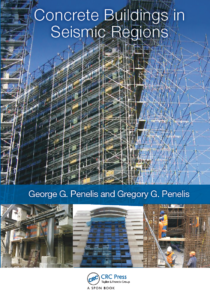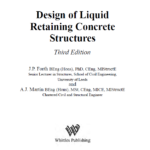محصولات ویژه
© کپی رایت 2025 | کلیه حقوق مادی و معنوی متعلق به بتنو می باشد

 Concrete Buildings in Seismic Regions_ کتاب ساختمان های بتنی در نواحی زلزله خیز
Concrete Buildings in Seismic Regions_ کتاب ساختمان های بتنی در نواحی زلزله خیز
 Seismic Design of Concrete Buildings to Eurocode 8_طراحی لرزه ای ازساختمان های بتنی یورو 8
Seismic Design of Concrete Buildings to Eurocode 8_طراحی لرزه ای ازساختمان های بتنی یورو 8
 Dynamic Behavior of Concrete and Seismic Engineering_ رفتار دینامیکی بتن و مهندسی لرزه ای
Dynamic Behavior of Concrete and Seismic Engineering_ رفتار دینامیکی بتن و مهندسی لرزه ای
 Concrete Structures in Earthquake_ سازه های بتنی در زلزله
Concrete Structures in Earthquake_ سازه های بتنی در زلزله
 Solid Mechanics and Its Applications_مکانیک جامدات و کاربردهای آن
Solid Mechanics and Its Applications_مکانیک جامدات و کاربردهای آن
 Design of Liquid Retaining Concrete Structures_طراحی بتن نگهدارنده مایع سازه ها
Design of Liquid Retaining Concrete Structures_طراحی بتن نگهدارنده مایع سازه ها
 Experiment and Calculation of Reinforced Concrete at Elevated Temperatures_آزمایش و محاسبه تقویت شده بتن در دماهای مرتفع
Experiment and Calculation of Reinforced Concrete at Elevated Temperatures_آزمایش و محاسبه تقویت شده بتن در دماهای مرتفع
 FINITE ELEMENT ANALYSIS AND DESIGN OF STEEL AND STEEL–CONCRETE COMPOSITE BRIDGE_المان محدود تجزیه و تحلیل و طراحی از فولاد
FINITE ELEMENT ANALYSIS AND DESIGN OF STEEL AND STEEL–CONCRETE COMPOSITE BRIDGE_المان محدود تجزیه و تحلیل و طراحی از فولاد
 Concrete Design_ طراحی بتن
Concrete Design_ طراحی بتن
 بتن یو اچ پی سی UHPS چیست؟
بتن یو اچ پی سی UHPS چیست؟
 Advanced Polymer Concretes and Compounds_بتن های پلیمری پیشرفته و اجزای آن
Advanced Polymer Concretes and Compounds_بتن های پلیمری پیشرفته و اجزای آن
 Handbook of recycled concrete and demolition waste_ کتاب راهنمای بتن بازیافتی و ضایعات تخریب
Handbook of recycled concrete and demolition waste_ کتاب راهنمای بتن بازیافتی و ضایعات تخریب